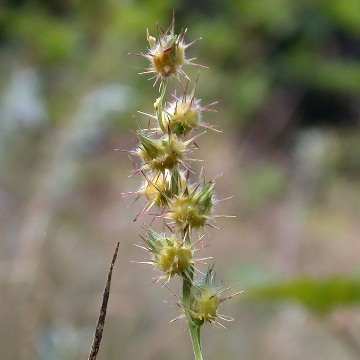

Cenchrus longispinus - (image 1 of 5)
Taxonomy
Family: Poaceae
Habitat
Sandy disturbed areas.
Associates
Distribution
ME to FL, west to ND, OR, CA, and TX.
Morphology
Spreading or ascending annual, 20-80 cm, usually branched; sheaths villous-ciliate distally; blades 6-18 cm long and 3-7 mm wide; burs hairy, 8-12 mm long (including spines), with mostly 45-75 retrorsely barbed, slender spines 3.5-7 mm long, the lower spines relatively short and pointed downward; spikelets 2-3(4) per bur, 6-8 mm, exserted at the tip, visible down the middle through the lateral cleft in the bur.
Notes
Fruiting July to September.
Wetland indicator: UPL
The spines of Cenchrus are formed from concrescent branchlets that enclose the spikelets. Relative to many other fruits that attach to animals (epizoochory) that do so with the aid of hooks on the fruit (e.g. cocklebur), sandburs are more sinister is that the spines are sharp and straight and thus embed deeply in the skin.
References
Gleason, Henry A. and A. Cronquist. 1991. Manual of Vascular Plants of Northeastern United States and Adjacent Canada. Second Ed.
The New York Botanical Garden. Bronx, NY
|
© Michael Hough 2018 |